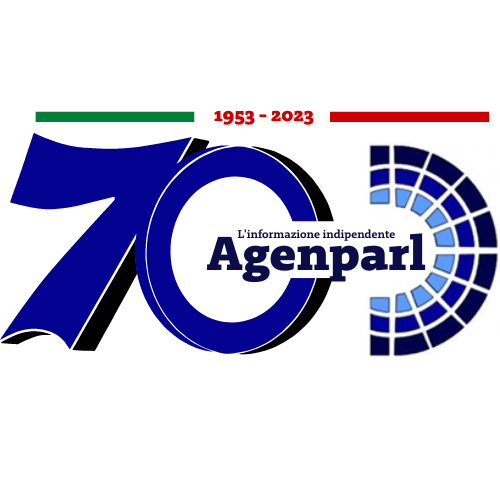 (AGENPARL) - Roma, 11 Maggio 2023
(AGENPARL) - Roma, 11 Maggio 2023(AGENPARL) – gio 11 maggio 2023 
Menopause Rev 2023; 22(1): 49-54
This is an Open Access article distributed under the terms of the Creative Commons Attribution-NonCommercial-ShareAlike 4.0 International
(CC BY-NC-SA 4.0). License (http://creativecommons.org/licenses/by-nc-sa/4.0/)
In June 2019 a53-year-old Caucasian woman pre
sented to theemergency department of“San Tommaseo
theexternal iliac artery. The uterus and theleft fallopi
an tube with thehomolateral ovary appeared normal.
Suspecting malignancy, an exploration oftheabdomen
was performed. There was no bowel or omental dis
ease. Hepatic Glissonian and paracolic showers were
free from macroscopic lesions. Surgeons performed
aright salpingo-oophorectomy with excision ofthepel
vic mass (Fig. 2), total abdominal hysterectomy, left
salpingo-oophorectomy (Fig. 3), and omental biopsy.
Due to thesurgical risk ofdamaging theexternal iliac
artery, thesurgeons left a0.5 cm margin ofadjacent
residual tissue localized at theright vaginal angle.
The extemporaneous examination ofthemass was not
performed because it was not available at our hospital.
Intraoperative markers (Ca 125, CEA, Ca 19.9, Ca 15.3,
1 FP, inhibin B) were negative. Final blood loss was ap
proximately 1600 cc. During surgery, thepatient was
transfused with 3 units ofpacked red cells.
The patient’s postoperative care was uncomplicated,
The denitive histological diagnosis was aGCT to
theright ovary with extensive necrosis and haemor
rhage. Uterus, left annex, and omentum were negative
for malignancy.
After surgery thepatient underwent a6-course reg
imen ofsystemic adjuvant chemotherapy with carbo
platin and paclitaxel. She started asubsequent regular
follow-up without relapse.
rf
We present acase ofgynaecological acute abdomen
with haemoperitoneum caused by therupture ofaGCT
in amenopausal adult; theGCT was not previous
ly diagnosed. We also conducted asystematic review
oftheliterature by consulting multiple bibliographic da
tabases research until November 2021. PubMed, Google
Scholar, Cochrane Central Register ofControlled Trials
databases and Ovid were queried to identify all articles
regarding cases ofhaemoperitoneum in menopausal
women with aGCT rupture. We also collected additional
relevant articles from thereference lists oftheprimary
identied studies. All authors participated in thesearch
strategy and in thedenition oftheinclusion and ex
clusion criteria. The research strategy included dierent
combinations ofthefollowing terms: haemoperitone
um granulosa menopause – spontaneous haemoperito
neum – granulosa cell tumour menopause – granulosa
cell tumour ovary – case report. Pertinent articles were
carefully evaluated. Full manuscripts were obtained
for selected articles, and thedecision for nal inclu
nr
The literature research, conducted until November
2021, identied atotal of1156 articles. After initial screen
ing we assessed 64 full-text papers ofwhich 39 did not
adhere to theinclusion criteria. Finally, 9 articles were in
Right annex with the pelvic mass, uterus, left annex
one case, which presented in shock state, was initially
treated with embolization oftheleft uterine artery. The
following day, she underwent open biopsy with frozen
section followed by total abdominal hysterectomy, bi
lateral salpingo-oophorectomy, omentectomy, and bi
lateral iliac lymph node sampling [28].
The clinical characteristics ofthepatients and
thehistopathological elements ofthetumour are sum
marized in Table 1. The mean age ofthepatients was
60.8 years. Most ofthewomen had parity ofmore than
2 (7/11, 63.6%). For 3 women parity was unknown
(27.2%). All women had aphysiological menopause.
Granulosa cell tumour was more frequent on theleft
ovary (6/11, 54.5%) than on theright one (45.4%).
t
The present review shows that theresearch dedicat
ed to GCT is poor given thelow incidence and thedi
culty in diagnosing thedisease.
work was limited by thelack ofpre- or intraoperative
tumour markers, particularly inhibin B.
Total 1156 papers identied
with thedatabase search
1092 papers excluded after abstract
screening
39 papers excluded for nonadherence
to inclusion criteria
25 full-text considered
9 papers included: 8 cases reports,
Table 1.
Distribution ofclinical characteristics ofthepatients and histopathological elements ofthemass
Years
Parity
Laterality
The authors report no conict ofinterest.
References
